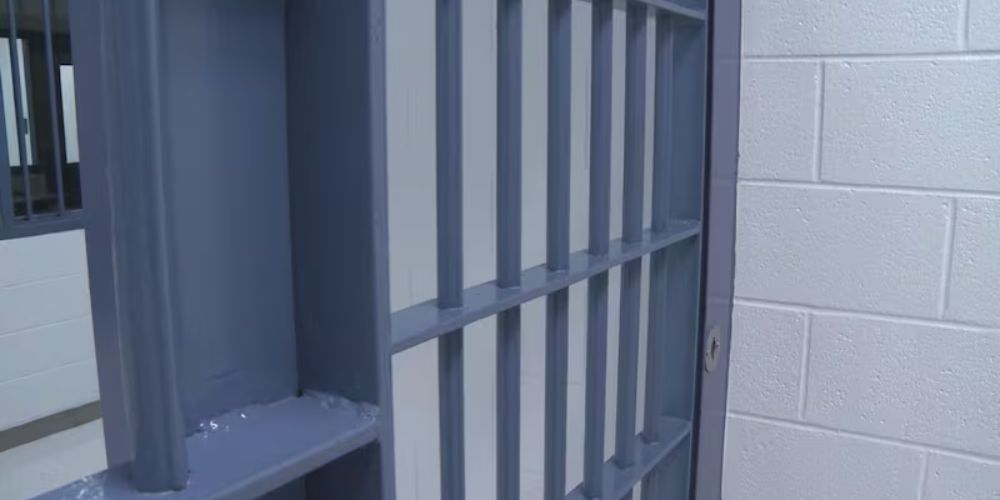In Texas, a wealth of programs exist to provide financial support, health services, and community assistance to seniors aged 50 and above. These programs are tailored to address the economic, medical, and lifestyle needs of older adults, helping them maintain independence and quality of life. Whether you live in bustling Houston or quiet Lubbock, you may be eligible for different types of government-funded aid—from energy bill help to healthcare coverage, property tax exemptions, and meal delivery. In this comprehensive guide, we will explore the major programs, eligibility criteria, average benefits, how to apply, and resources available across Texas.
Exploring the Landscape: Why Aid for Seniors Over 50 Matters
Demographic Snapshot of Texas Seniors
Texas is home to over 4.5 million residents aged 50 and over, making up approximately 15% of the state’s population. Of these, nearly 1.6 million are aged 60+, and roughly 30% live on fixed incomes of less than $25,000 annually. In cities like Dallas, San Antonio, Austin, and El Paso, expanding senior services have become a priority for local governments.
Economic Pressures Faced by Seniors
Rising healthcare costs, inflationary food prices, increased utility bills, and property taxes strain household budgets. With average out-of-pocket health expenditures for seniors hitting $5,500 per year in Texas, additional financial support can be vital in stretching retirement dollars.
Why Age 50? A Critical Threshold
Age 50 is a triggering point for many programs. Some benefits begin at 50 to prepare for slowing workforce participation or early retirement; others are tied to income or health metrics, which naturally shift as people age.
Relief for Essential Living Costs
Low-Income Home Energy Assistance Program (LIHEAP)
A national program delivered locally by the Texas Department of Housing and Community Affairs (TDHCA). LIHEAP offers cash grants averaging $350 per household annually to cover electricity, gas, or propane bills. Applicants must be at or below 150% of the federal poverty line—around $20,000 per year for a household of one. In major metros like Fort Worth and El Paso, winter energy assistance is often complemented by summer cooling grants due to extreme temperatures.
Texas Utility Help Programs
Many utility companies in San Antonio, Dallas, and Houston offer supplemental “lifeline” credits specifically for seniors, even if LIHEAP awards are exhausted. For example, a typical discount of $15–$20 monthly on electric bills can accumulate to about $240 a year—substantial among tight fixed-income budgets.
Health Coverage and Medical Assistance
Medicare Savings Programs (MSP)
For low-income seniors, Texas offers four tiers of MSPs which pay Medicare Part A and Part B premiums, with some also covering deductibles and co-payments. The Qualified Medicare Beneficiary (QMB) program beneficiaries pay no Part A or B costs and no hospital copays.
To qualify in 2025, monthly income limits for the QMB program are around $1,236 for individuals and $1,664 for couples. Others like the Specified Low-Income Medicare Beneficiary (SLMB) allow for slightly higher thresholds—$1,395 single/$1,878 couple. These programs in cities like Laredo and Amarillo have had enrollment increases of over 20% as outreach expanded through community centers.
Medicaid for Adults 50+ with Special Needs
While Medicaid traditionally covers individuals under age 65 with low income and disabilities, many seniors over 50 who meet disability criteria may qualify. In urban hubs such as Corpus Christi and Arlington, local Health and Human Services Community Care for the Aged & Disabled (CCAD) helps recipients access medical services, assistive devices, and related care.
Prescription Assistance and Drug Discounts
Texas provides the Texas Health Improvement Network (THIN) and other programs offering free or discounted medications for seniors with annual incomes under $18,000. In cities like Beaumont and Waco, over 25 clinics are enrolled in mail-order pharmacy partnerships—some reduce generic drug costs by up to 90%.
Housing and Property Tax Relief
Age 65+ Exemption or Disability Exemption
Texas seniors aged 65+ qualify for a $10,000 school district property tax exemption, and most local governments add an additional $3,000–$10,000 exemption. In El Paso County, about 35% of senior homeowners—over 40,000 households—benefit, reducing taxes by $500 to $1,200 annually.
Freeze on School Taxes
Once aged 65 and approved, seniors are eligible to freeze campus maintenance and operations taxes at the rate they were paying upon application. In fast-growing suburbs of Austin and Katy, residents often save an additional $500–$800 per year thanks to tax rate increases elsewhere.
Section 202 Supportive Housing for the Elderly
This federally funded program, available in several Texas cities, offers subsidized rental housing with supportive services to low-income seniors. In San Antonio, average rent for a one-bedroom apartment under Section 202 is below $450 monthly.
Food Security and Nutritional Programs
The Texas Elderly Nutrition Program
Administered through Area Agencies on Aging, this program provides hot meals at community centers and homedelivery (“Meals on Wheels”) with minimal or no fees. Dallas County delivers an estimated 2 million meals annually, and rural regions like the Texas Panhandle see an average of $40 worth of food delivered weekly per senior.
Supplemental Nutrition Assistance Program (SNAP)
Formerly known as “food stamps,” SNAP provides an average benefit of $125 per month per individual. Texas saw a 10% increase in senior SNAP participation from 2019–2024, with over 315,000 seniors over 60 enrolled in SNAP benefits. Based on income, simple monthly paperwork updates allow recipients to continue receiving benefits.
Farmers Market Nutrition Programs
In cities like Houston, El Paso, and Corpus Christi, local health partnerships give seniors coupons to purchase fresh vegetables and fruit. Across the state, participating farmers markets accept up to $40 in fruit and vegetable purchases monthly from SNAP-eligible seniors.
Transportation Aid and Mobility Assistance
Reduced-Fare Transit Passes
Most urban transit systems—DART in Dallas, VIA in San Antonio, METRO in Houston, CapMetro in Austin—offer half-price or free passes for seniors 65+. Seniors aged 50–64 with disabling conditions or low-income qualifications may also access reduced fares. A monthly transit pass costing $15–$25 virtually covers unlimited city travel.
Volunteer Driver and Specialized Transit Services
Rural counties like Jefferson and Hidalgo pair older residents with community volunteers who provide rides to medical appointments, grocery stores, and social activities, funded by Older Americans Act grants. Some programs reimburse volunteer drivers up to $0.50 per mile.
Employment and Income Support Programs
Senior Community Service Employment Program (SCSEP)
Funded by the U.S. Department of Labor and administered through local sites like the YMCA in San Antonio or Workforce Solutions in Houston, SCSEP provides paid part-time work and training to low-income seniors aged 55+. The average stipends range from $8.80 to $12.50 per hour in 2025. In the Rio Grande Valley, about 1,200 seniors are employed through SCSEP annually.
Property Tax Deferral Programs
Age 60+ can apply to defer property tax payments under the Texas Property Tax Code. Deferred taxes must be repaid with simple interest upon sale of the property or death of the owner. In the Houston area, over 10,000 deferrals are in place, and the average tax deferred is $3,200 per household.
Community Support & Social Inclusion
Senior Centers and Community Resource Hubs
Every major metropolitan area in Texas has senior centers offering exercise classes, counseling, meals, legal advice, and social events. In Corpus Christi alone, over 20,000 residents attended fitness programs and cultural activities at senior centers last year.
Legal Aid for Estate Planning and Consumer Rights
Nonprofit legal services in Dallas, Austin, El Paso, and McAllen offer free will drafting, powers of attorney, and debt counseling for low-income seniors. In 2024, legal clinics helped over 5,000 older adults, reducing estate planning costs by an average of $450.
Technology Training Programs
To combat isolation and digital exclusion, many local libraries and council offices provide free training for seniors in cities like Lubbock, Odessa, and Midland. Classes on using smartphones, Zoom, email, and telemedicine platforms are often offered at no cost.
Leveraging Multiple Programs Together
Layering Benefits for Maximum Help
Seniors often qualify for more than one program. For example, a 67‑year‑old retired schoolteacher in Austin might receive a school tax freeze, LIHEAP, Medicare Savings Program, SNAP, reduced transit fare, and food delivery—adding over $5,000 in annual financial relief.
Guidance Through Area Agencies on Aging (AAA)
Texas’ 28 AAAs act as one-stop resource centers. In Dallas, the AAA has assigned caseworkers who help seniors apply for Medicaid, SNAP, energy assistance, ride-share funding, and legal help. Over 65,000 seniors in North Texas benefited from coordinated services in 2024.
Staying Alert for Temporary Grants and Pilots
City-led pilots—such as electric bill “bonus credits” in El Paso during heatwaves—or targeted grants (“elder flood mitigation grants” in Houston) can provide unique, short-term funding. These are often announced through city newsletters, social media, or senior center bulletin boards.
Applying and Planning
Step-by-Step Guide to Applying
-
Identify Your Situation: Gather recent income documentation, proof of age, Social Security number, and utility/property records.
-
Connect Locally: Contact your nearest AAA or Council on Aging. Visit TexasHealthandHumanServices.gov for state-run programs.
-
Fill Out Forms: Most applications can be completed online, by mail, or in person.
-
Stay Organized: Use a checklist and calendar to track deadlines, renewal dates, and required annual updates.
-
Ask for Help: Volunteers are available especially at libraries and senior centers to assist with paperwork.
Common Documentation Needed
-
Proof of identity and age: birth certificate, driver’s license, or passport
-
Income proof: Social Security statements, pensions, bank statements
-
Utility payment history: electricity, gas bills
-
Property details: tax statements, mortgage documents
-
Medical/disability proof: doctor’s letter, Medicare denial letter for disability
When to Apply?
-
LIHEAP applications open in fall and winter; apply by October or November.
-
Tax exemptions and deferrals should be filed soon after birthdays (for 65+) or after turning 60.
-
Medicare Savings help is available any time but may take 45–60 days to process.
Real-Life Examples of Impact Across Texas
Barbara in Waco
At 62 and living on Social Security, Barbara has qualifying income of $16,000. She receives Medicare Savings Program aid, a $600 annual property tax exemption, SNAP benefits totaling $1,500 a year, and energy credits. Her total annual benefit package is around $3,500, helping her avoid medical debt and utility shut-offs.
Jorge in San Antonio
Retired at 55 due to a disability, Jorge visited his local AAA and enrolled in Section 202 housing. Monthly rent is $420, and he receives Medicaid and energy bill help. He also uses a metro senior transit card, giving him a free bus pass each month. His income is limited, but his living costs are now manageable.
Grace in Lubbock
At 70, Grace owns her home and froze her school taxes three years ago. She takes a free computer class at the community library, uses the LIHEAP credit every summer, and gets meal delivery five days a week. Her group yoga class at the senior center keeps her active and connected.
Keeping Up with Changes and Expansions
Texas Legislative Updates
Each legislative session brings budget changes. For example, in 2023, Texas increased LIHEAP funding by $35 million to expand summer cooling benefits in border regions. The 2025 session allocated funding for pilot affordable senior housing projects in Austin and Galveston.
Federal Developments Impacting Seniors
Recent federal actions under the Inflation Reduction Act gave more states the option to expand energy assistance and drug discount programs. In spring 2025, Texas submitted proposals for a Medicare negotiation pilot and enhanced prescription price caps under this law—giving hope for deeper prescription savings in 2026.
Local Innovations
Cities such as El Paso created a “senior elder care stipend” of $200 per person to assist caregivers last summer. Houston piloted floodproofing grants of up to $2,000 for senior homeowners in high-risk zones.
Tips for Advocating and Staying Engaged
Get Involved in Local Advisory Councils
Many cities invite senior members to sit on aging and social services councils. Doing so helps shape and influence programs.
Use Public Meetings and Budget Hearings
Attend city or county budget hearings to voice the need for more senior aid. In Amarillo during the 2023 budget cycle, senior advocates successfully increased meal-delivery funding as a result.
Stay Informed Through Local Media and Digital Channels
Read city newsletters in Fort Worth or subscribe to senior department emails in Tyler, Longview, and Abilene for updates on grants and new services.
Share Your Story
Speaking at public forums, senior centers, or to local press can help illustrate the impact of these programs. Real-life stories often influence decision-makers and encourage continued investment.
Final Takeaway: A Brighter Future for Texas Seniors
Texas offers a robust network of government assistance programs designed to uplift seniors aged 50 and above—addressing costs related to housing, food, medical care, utilities, transportation, and community engagement. By understanding eligibility thresholds, documenting needed materials, and tapping into local resources, older adults can combine multiple programs and potentially gain several thousand dollars in annual benefits.
From LIHEAP grants to Medicare savings programs, property tax exemptions to transportation passes, seniors across Texas—from Amarillo to McAllen—are reaping rewards in monthly savings and improved quality of life. And as state and federal lawmakers continue to respond to aging demographics, more support initiatives are on the horizon.
If you or a loved one is over 50, now is the time to explore your eligibility, connect with local support systems, and enroll in available assistance. A little effort today can unlock financial breathing room, health security, and greater independence for years to come. Texas seniors deserve to age with dignity—and these programs are here to help.











Leave a Comment